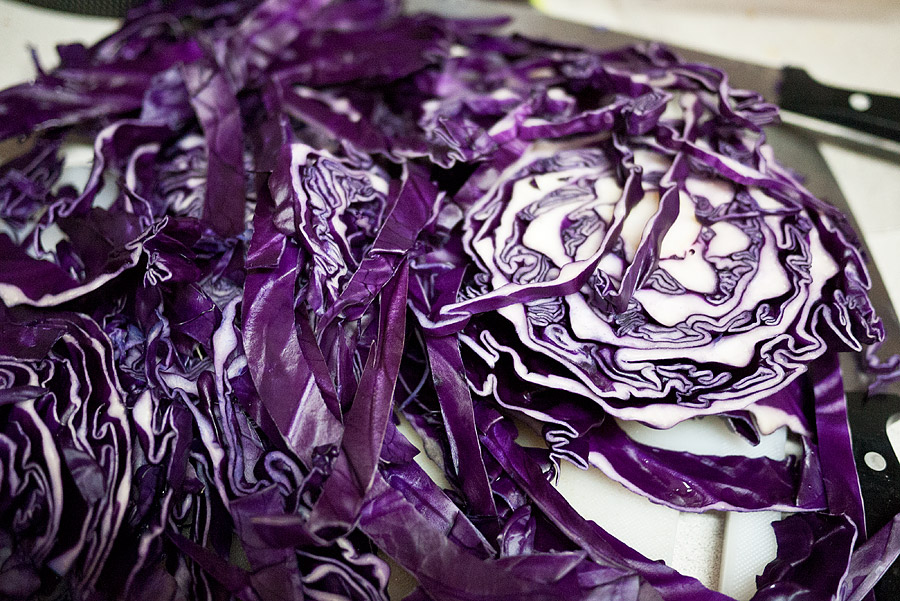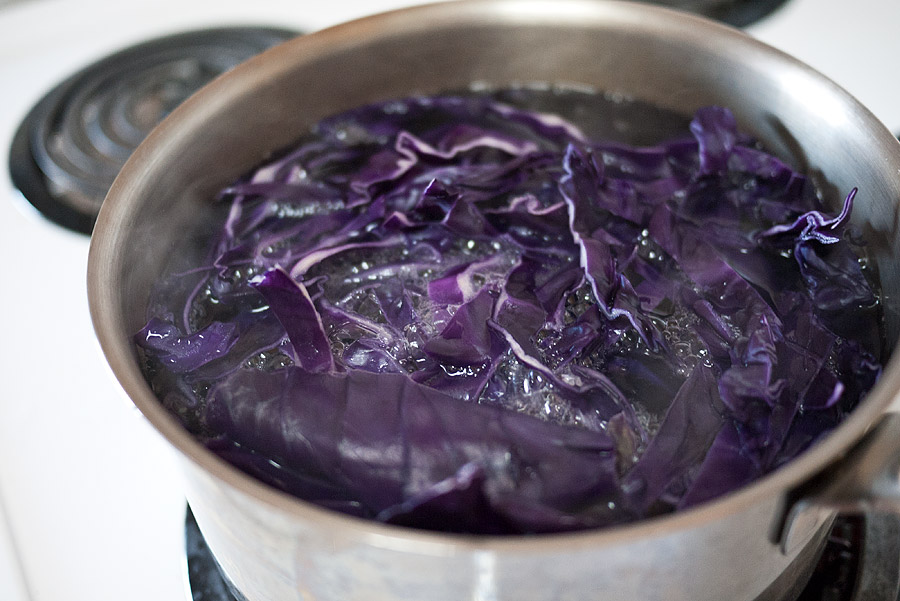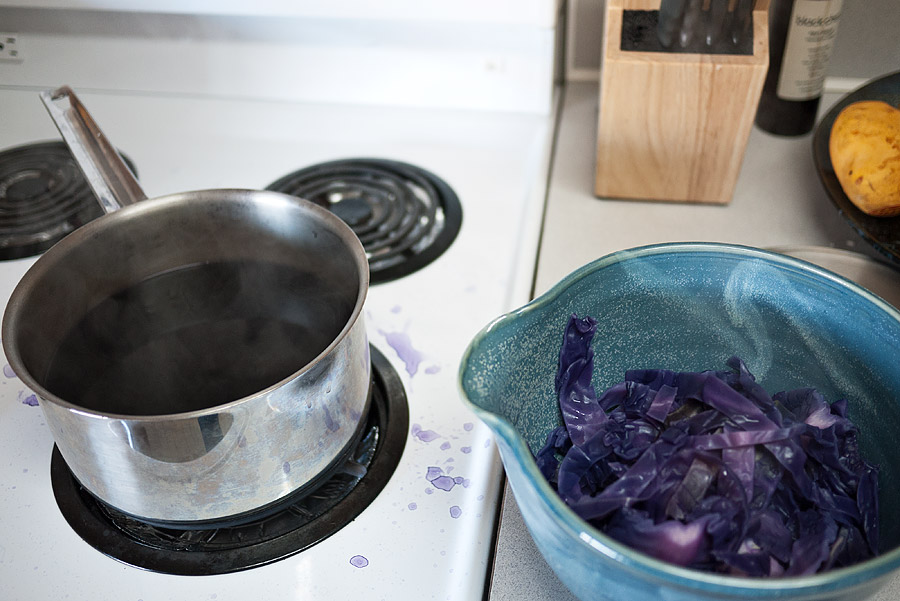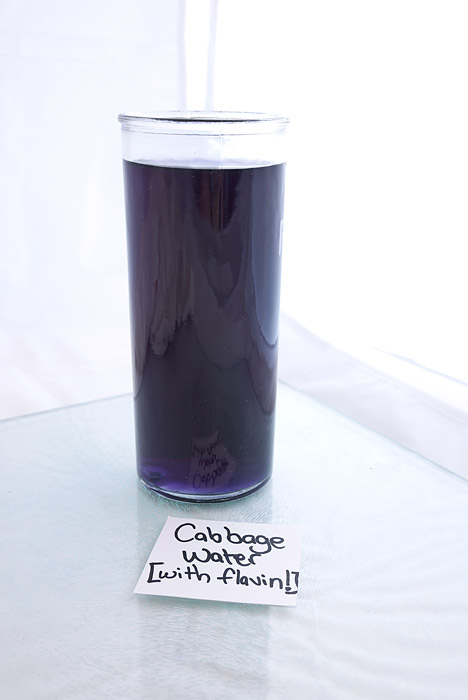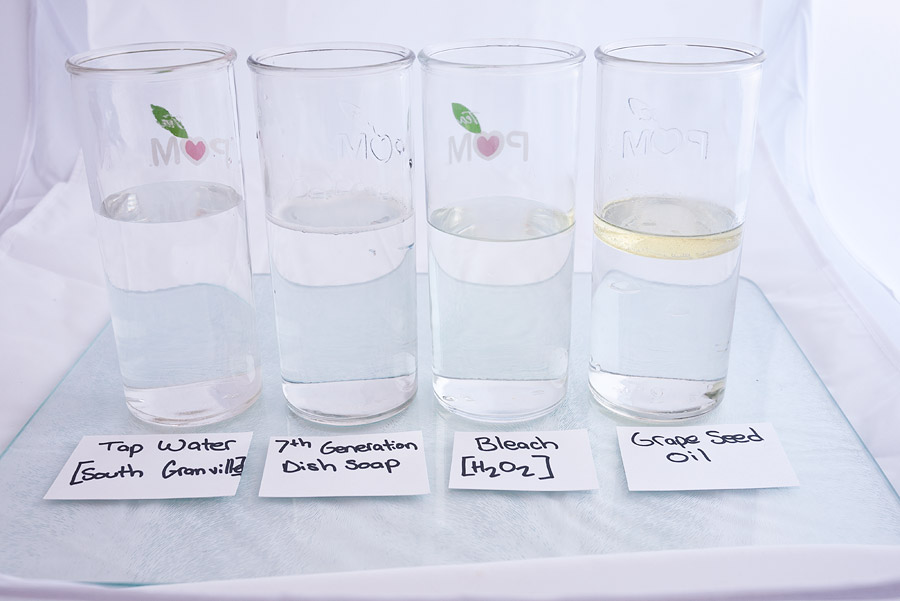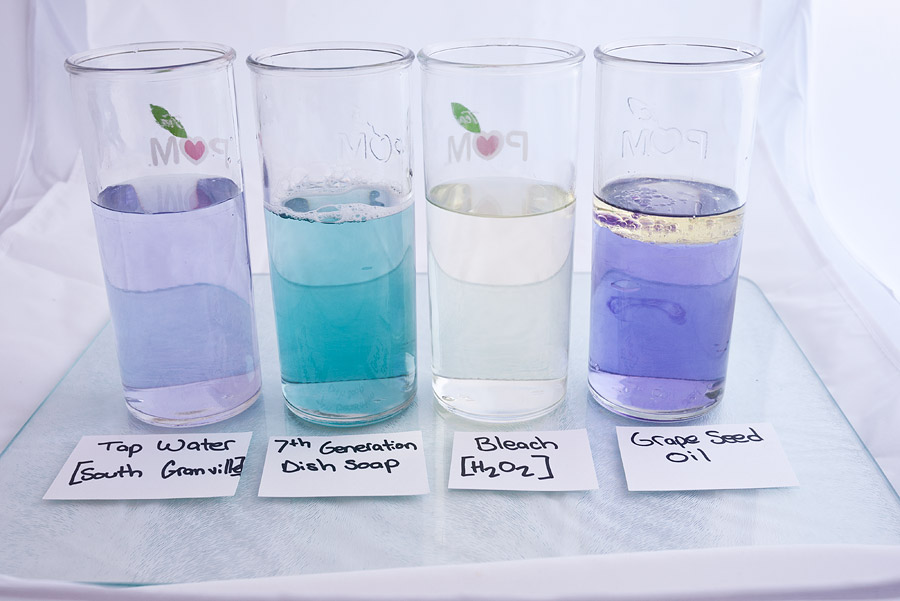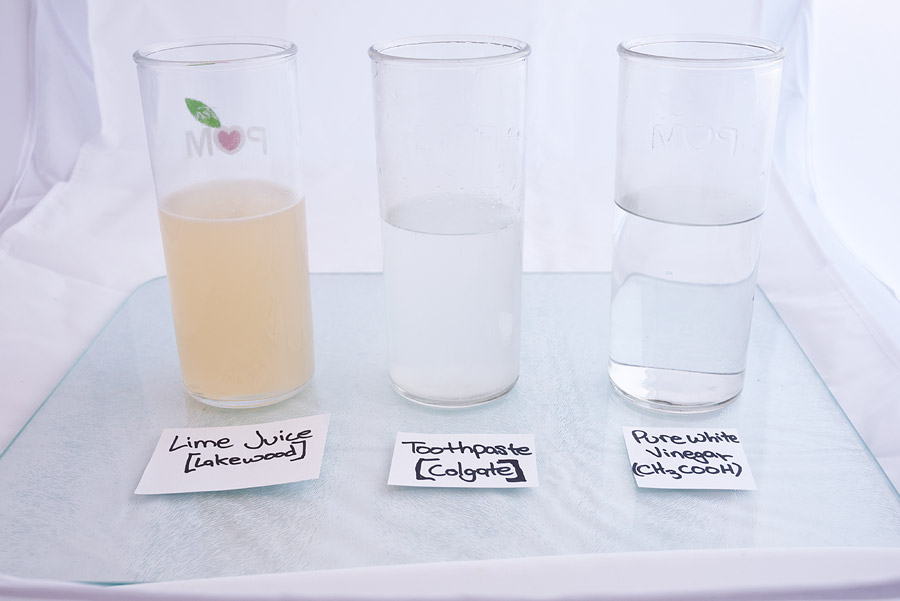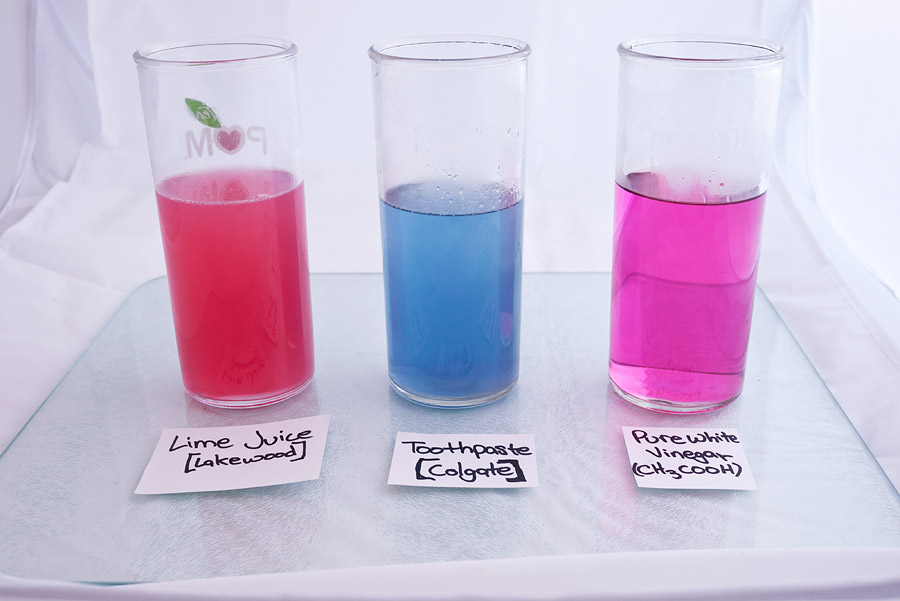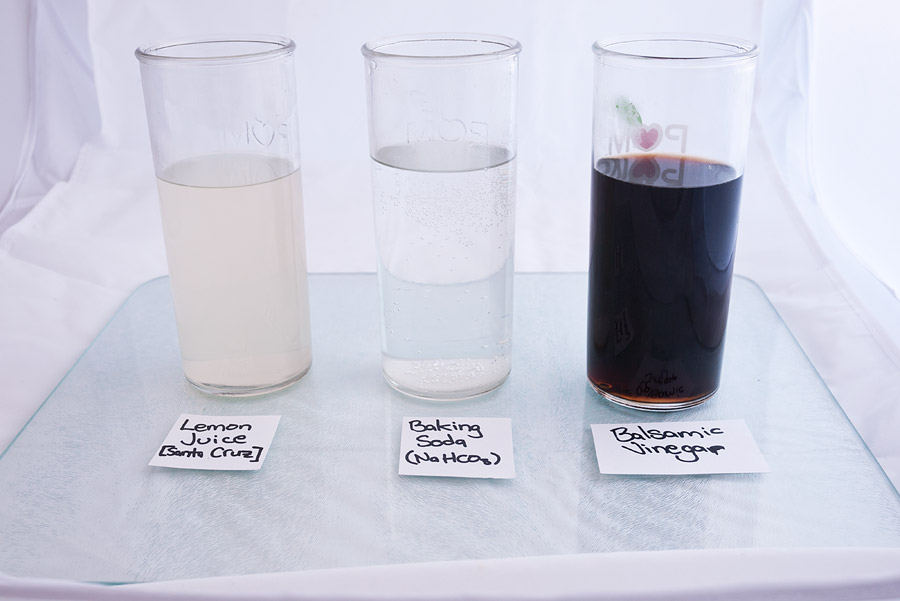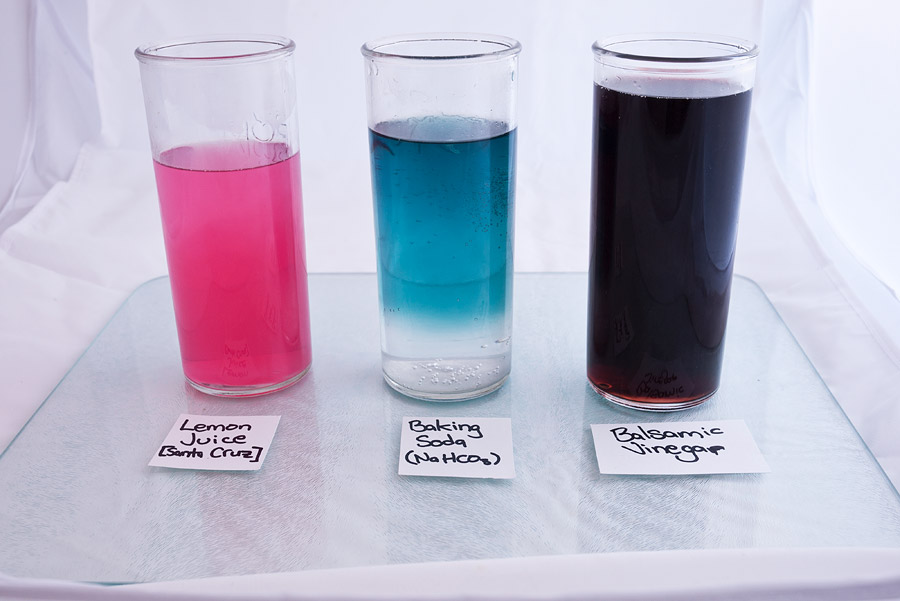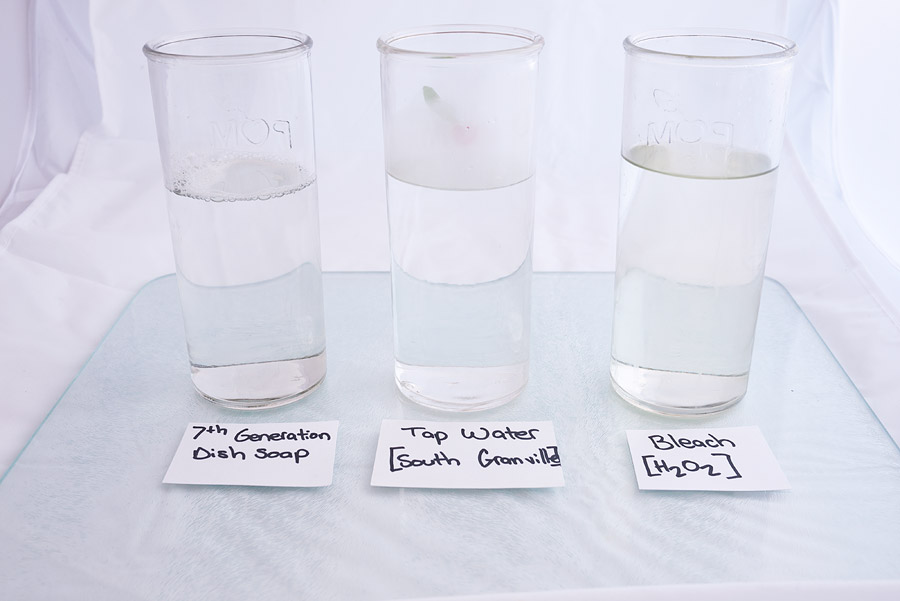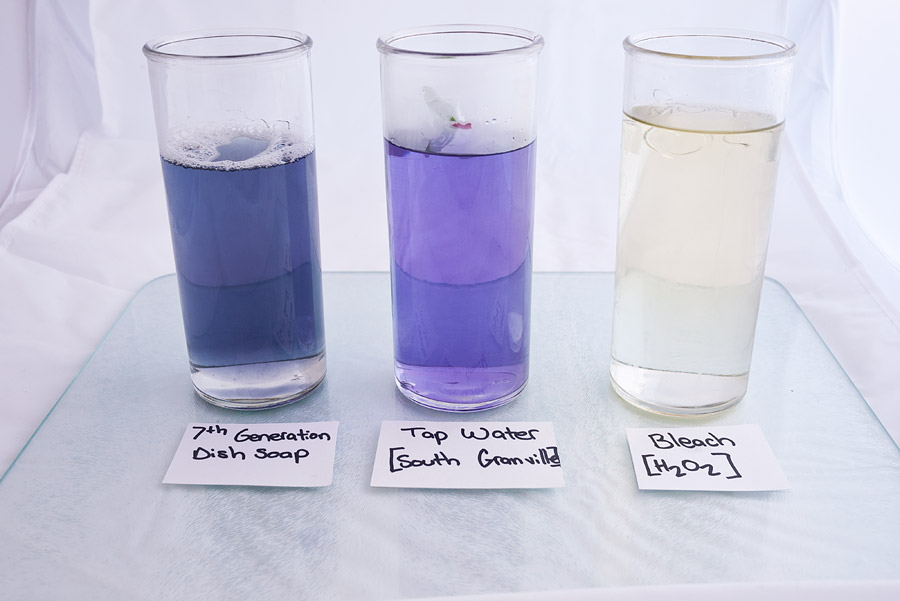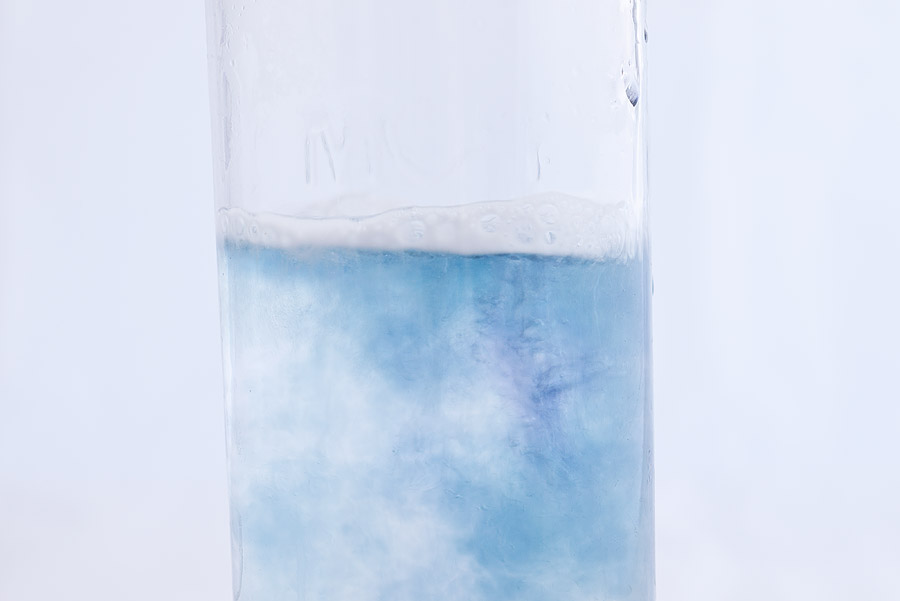Chemistry
Acid-Base Chemistry… at Home! Fun with Flavin!
On 06, Mar 2012 | No Comments | In Chemistry, Projects | By scott
One of my favourite sub-disciplines within general chemistry is acids and bases. While the tiresome titrations were tedious, I loved how the mere change in the concentration of hydronium ions or hydroxide ions resulted in radically different environments that could be made more or less extreme by further alterations—things could be changed back and forth, unlike the mono-directional transformation of bread to toast. Since I’m a big fan of shiny objects and colours, using pH-indicators always amused me, and it was one of the things I wanted to bring home. I learned that there were multiple pH-indicators out there, including one in red cabbage called ‘flavin’, which acts as an indicator, and, best of all, it produces a colour whether the solution is acidic xor basic—take that, phenolphthalein!
This means that you can do acid-base chemistry at home, investigating which household items are acidic and which are basic—no, not that diet. Start by cutting up a red cabbage, then filling up a pot with the chopped cabbage and water. Boil it all for about ten minutes or so, then strain out the cabbage leaves, saving the liquid mixture, which has now turned purple, since the water has absorbed some cabbage-compounds, including the flavin.
With the remaining cabbage pieces, you can make lots of fun things—like most things in life, it’s great with oil and salt and lemon, but there are probably more healthy recipes out there.
Next fill up some clear glasses with household things. I like to fill each glass about half-way up with water, and then put one compound in it. For example, I might put 30 mL of lemon juice and 125 mL of water in one glass. Next, pour in a bit of the cabbage-water solution, and notice if a colour comes about.
Some tips
- Compounds with a low pH (acidic things) will be red/pink, a neutral pH will be a light purple, and a high pH (basic) will be blue/green.
- Using the aqueous pH-indicator makes it difficult (or perhaps impossible) to test the acidity of hydrophobic substances like oils and fats.
- Some things that have added colour—e.g. balsamic vinegar—will overpower the colour produced by the indicator.
- Bleach doesn’t seem to follow the rules, presumably due to magic.
For some spoilers, see what I’ve produced below:
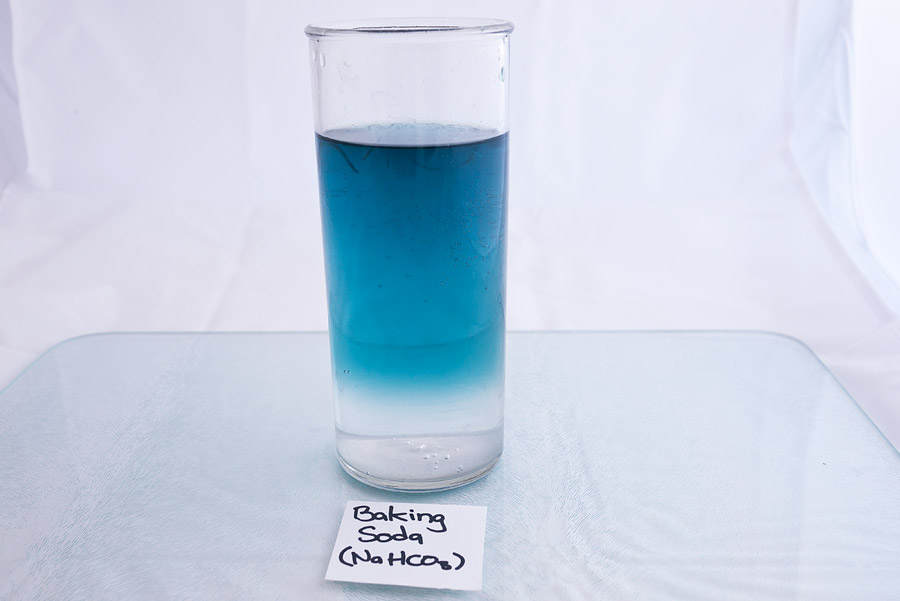
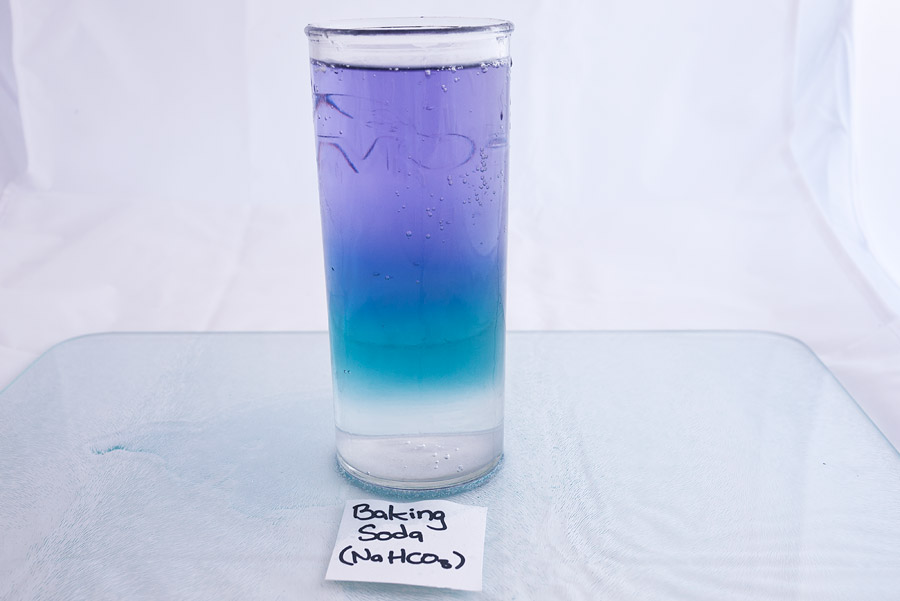
Baking soda after the indicator has been added, and the post-indicator baking soda solution after white vinegar has been added.



